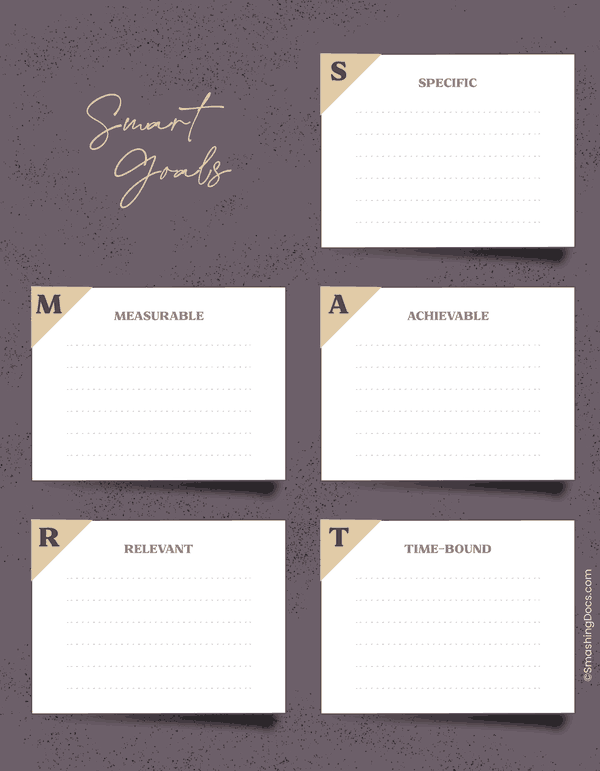
S.M.A.R.T. Goals Templates To Motivate You With Your Goals
Using a printable S.M.A.R.T. template you can keep your eyes on the prize at all times and move towards achieving your dreams faster.

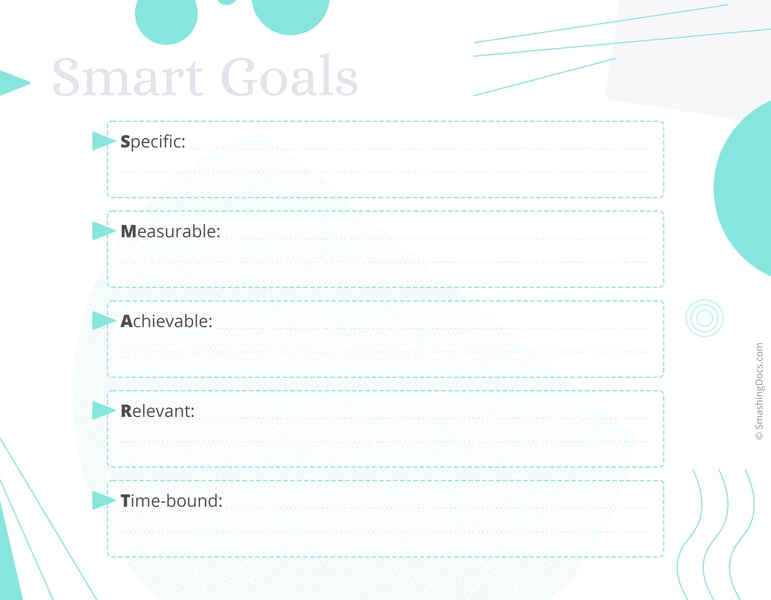
Free Clear and Crisp Turquoise Smart Goals Template
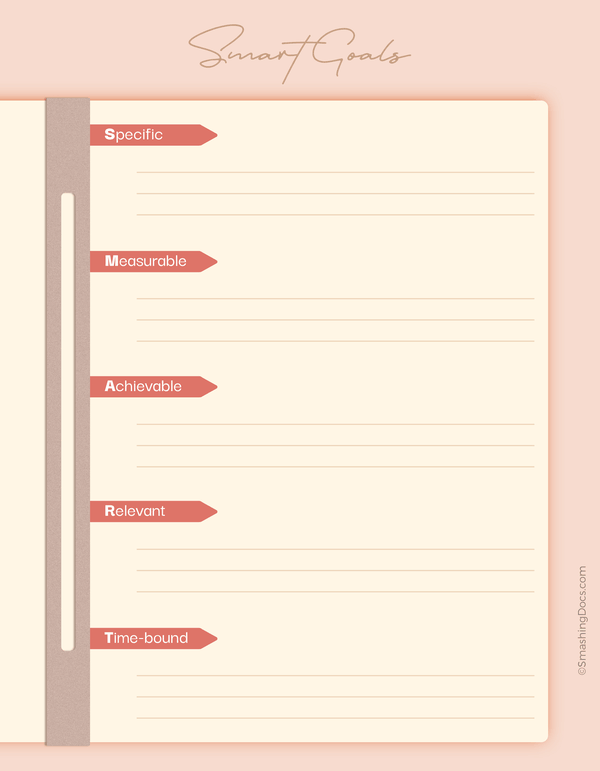
Free Elegant Pearl SMART Goals Template
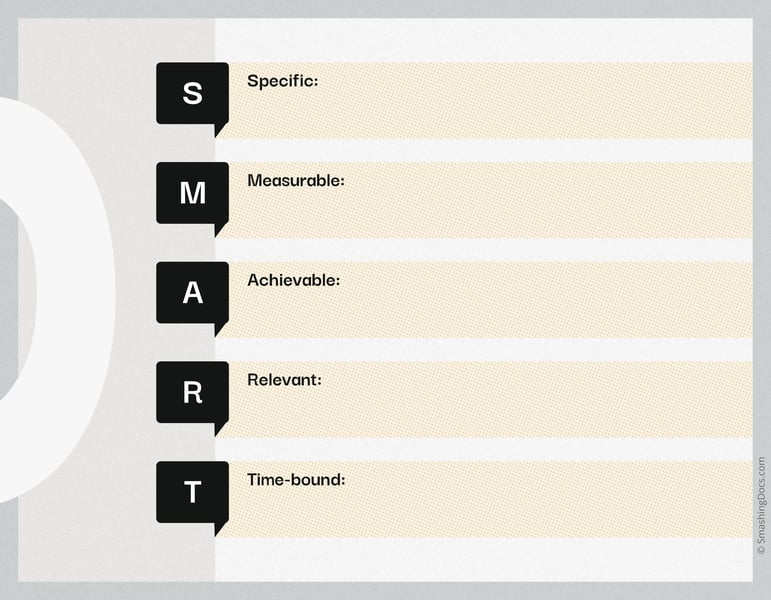
Free Retro-Vibes SMART Goal Setting Template
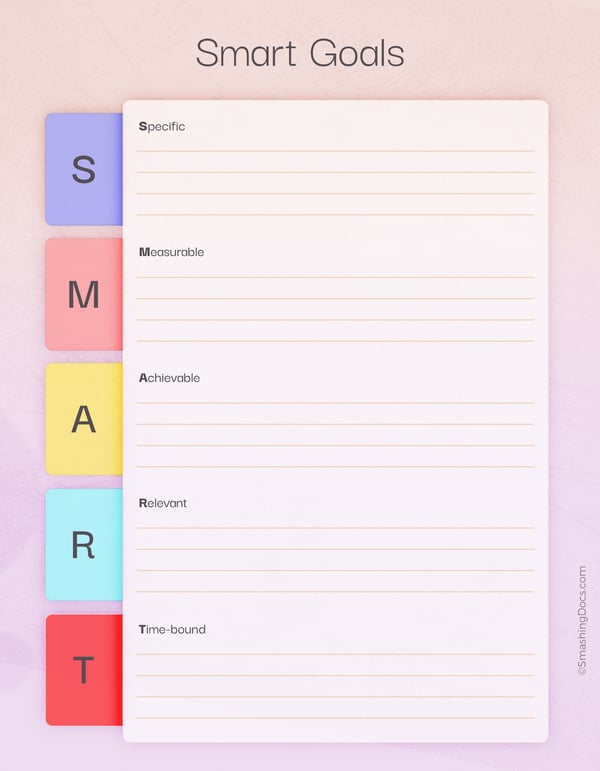
Free Bright-Tabs Smart Goals Template
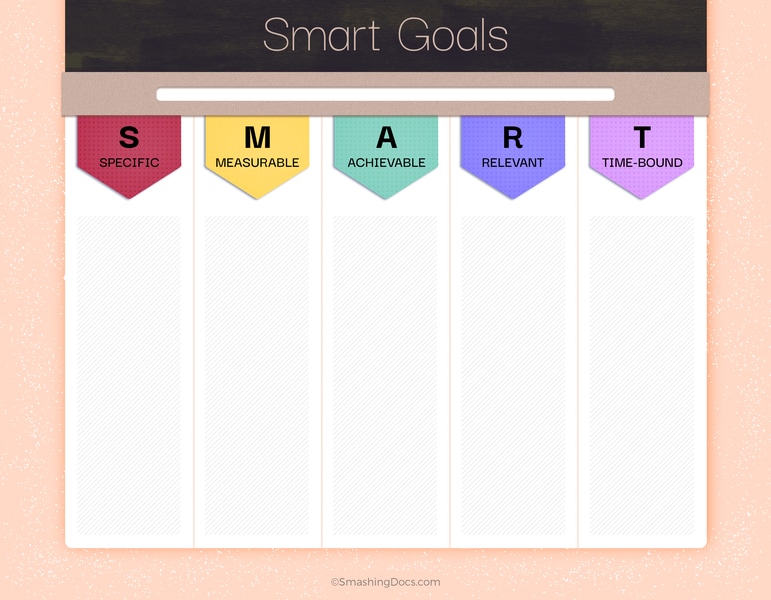
Free Color Tabs Smart Goal Template
A Champs Guide to SMART Goals Setting
Humans are naturally competitive. The need to compete and succeed is wired into our brains since prehistoric times when various resources were scarce and natural dangers — prevalent.
Today, however, most of us live a more “cushioned” lifestyle with more abundance in resources than ever. And oftentimes this makes us reluctant to act on our goals, especially when those appear more like lofty aspirations of “getting rich”, rather than concrete, measurable yearnings like “earning an extra $5,000 this month”.
So it wasn’t long before scientists took interest in the subject of goal setting. In 1981, Dr. George T Doran published an article titled “There’s a S.M.A.R.T. way to write management goals and objectives”
And that’s how the popular concept of SMART goal setting came to be.
What are SMART goals?
SMART is an acronym for Specific, Measurable, Attainable, Realistic, and Timely goals. Doran argued that “the establishment of objectives and the development of their respective action plans” is a crucial element of corporate management strategies.
Yet, few organizations excel in this area. Mostly because the managers are under excessive pressure to produce immediate results and don’t want to commit to situations with variables they can or cannot control.
To overcome this anxiety around setting objectives, Doran created the SMART framework, which allows you to set realistic, yet substantial goals, aligned with the wider business contexts. Later, SMART goal setting “migrated” to personal growth. Arguably, it’s now the most well-known and widely-used goal-setting technique in the world.
And for a good reason — SMART goal setting works!
A 2018 field study found that students who received SMART Goal Enhanced Debriefing completed more educational actions than those who didn’t receive one. Another study found that 76% of participants who wrote down their goals and reported to an accountability partner have successfully achieved the set objectives. For comparison, only 43% of participants who had unwritten goals, achieved them.
SMART Goal Examples
The SMART framework prompts you to think from bigger to smaller. Essentially, you have to formulate your goal in a way that satisfies all five objectives. These constraints prompt you to further think about what it is that you really want and ensure that your objective is realistically achievable.
To better illustrate this, here are two SMART goals examples.
Personal SMART Goal Example
“Loose 15 pounds in six months. This will be achieved by taking a new exercise regime starting in March (3 gym classes per week) and switching to a low-carb diet. To stay on track, my friend Jane will keep me accountable and check in with me daily. If I skip workout classes more than 3X times per month, I have to pay her a $500 fine.”
Professional SMART Goal Example
“Grow the number of gaming app mobile active users by 2,000 in Q4 2022. To acquire new users, I’ll perform ASO in October and run 2 UAT social media campaigns in October 2022 (budgets approved) and 1 mobile app marketing campaign (rewarded videos) in Nov 2022. We’ll use the current analytics app to measure UA progress and costs + churn levels.”
How to Write SMART Goals
To write a SMART goal list, block 15-30 minutes of your time to think over the following questions:
S: Specific
- What do you want to accomplish?
- What steps do you need to take?
- Who’s responsible for it?
You need to have a clear mental picture of your main objective and the sub-steps for accomplishing it.
M: Measurable
- How will you track your progress?
- Which metrics are best to use?
- How much improvement do you need to make?
Think in numbers or in another metric of value such as a final positive outcome (e.g. beta testing program launch).
A: Attainable
- What resources do you have at your disposal?
- Which extra ones you might need?
Make sure that the desired outcomes/results are proportional to the resources you have. If not, change the scope or time parameters.
R: Realistic:
- Can you really accomplish this?
Be honest here: if you don’t have the knowledge or resources to push through with this goal, you should probably adjust it.
T: Timely
- What’s your timeline?
Set a specific due date to steer faster action. The easiest way to come up with a good timeframe is by thinking backward. That is moving from the outcome to the “groundwork” steps. Then estimate how much each stage will take.
That’s it. Grab a SMART goal-setting template you fancy and start scribing your big ambitions!
